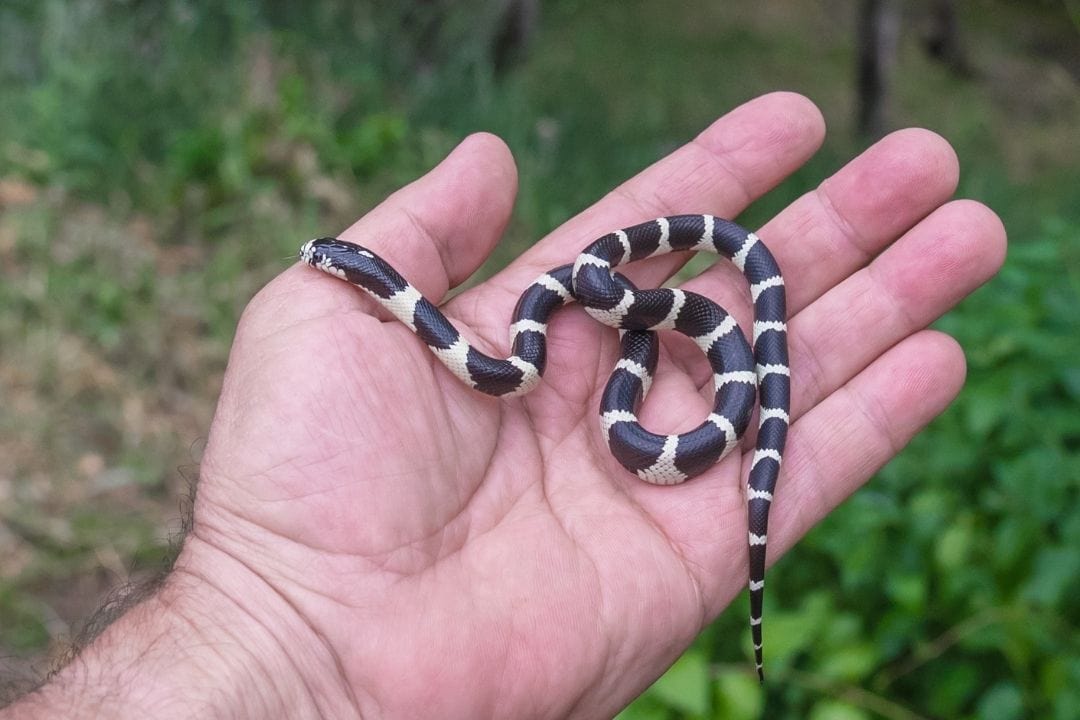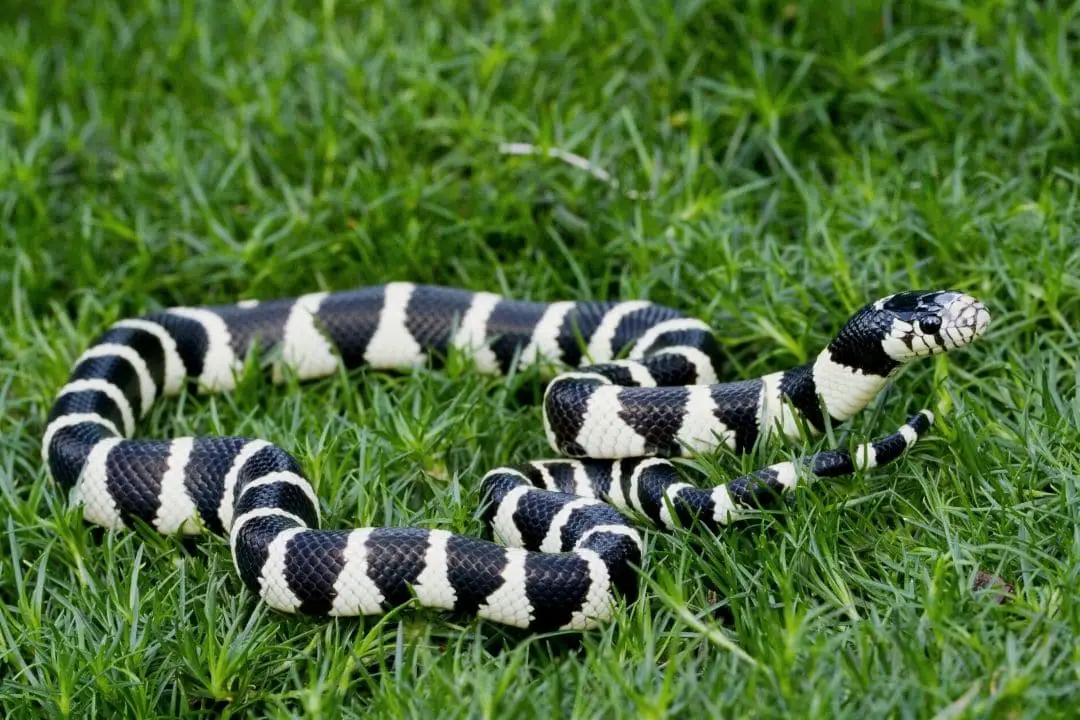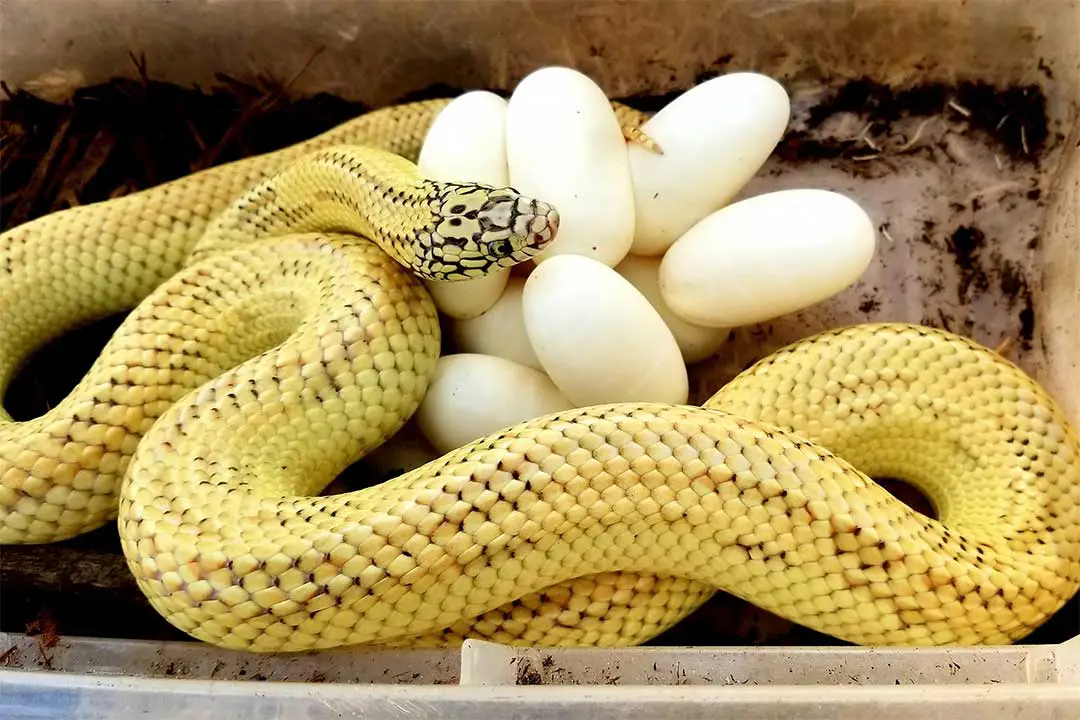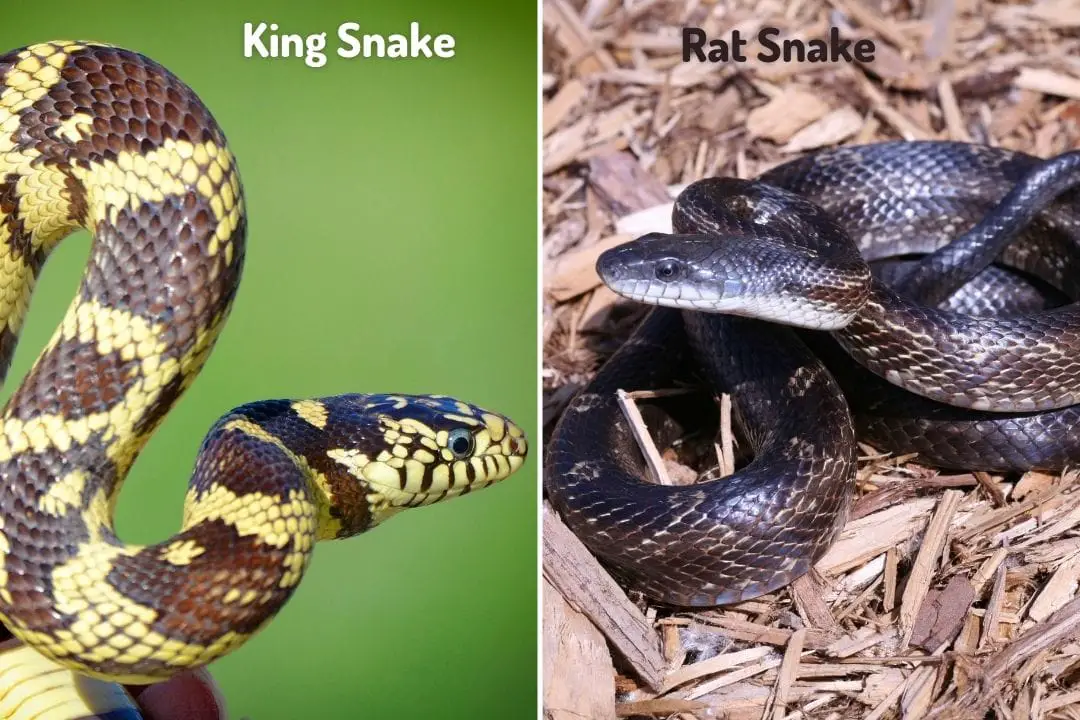Kingsnakes (Lampropeltis) are amazing snakes known for their ability to eat other snakes. While there are a number of species, most have a similar lifespan.
How long does a king snake live?
On average, a captive king snake can live to be between 20 and 30 years old. Their lifespan is shorter in the wild.
Wild Lifespan
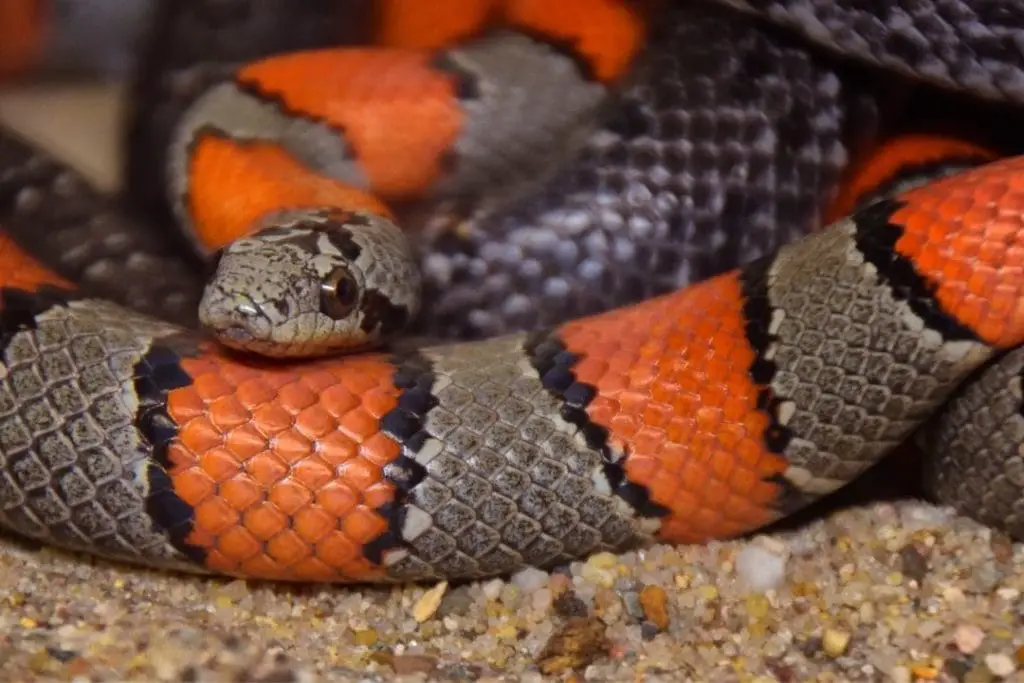
Lifespan in wild snakes isn’t well-documented compared to other creatures. The high estimate for a wild kingsnake no matter the species is likely around 15 years.
Kingsnakes in the wild tend to reach sexual maturity between the ages of 2 and 4 years old. This gives a long reproductive life since most species will stay fertile into their teen years.
Wild snakes face a lot of challenges that a captive snake doesn’t need to worry about. Wild snakes need to hunt for food, which may be hard to find some years.
Snakes living near humans may also run afoul of poisons meant for rodents. Some poisons don’t kill immediately and this means predators like snakes and owls can ingest a poisoned rat and die.
Weather is also a threat. Unseasonably warm or cold temperatures can kill snakes easily. A bad cold snap can prove too cold to survive or the snake may not have enough time to finish digesting a meal.
Snakes can also suffer from heatstroke, so a very hot day can kill them. Things like floods and droughts are very dangerous to wild animals.
Wild animals are also vulnerable to disease and parasites. One injury becoming infected can kill very quickly. Predators are also a threat to kingsnakes.
Young kingsnakes are eaten by many predators including other kingsnakes. This means that most kingsnakes do not reach adulthood. Many other snakes do not live for very long either thanks to how uncertain their lives are.
Captive Snakes
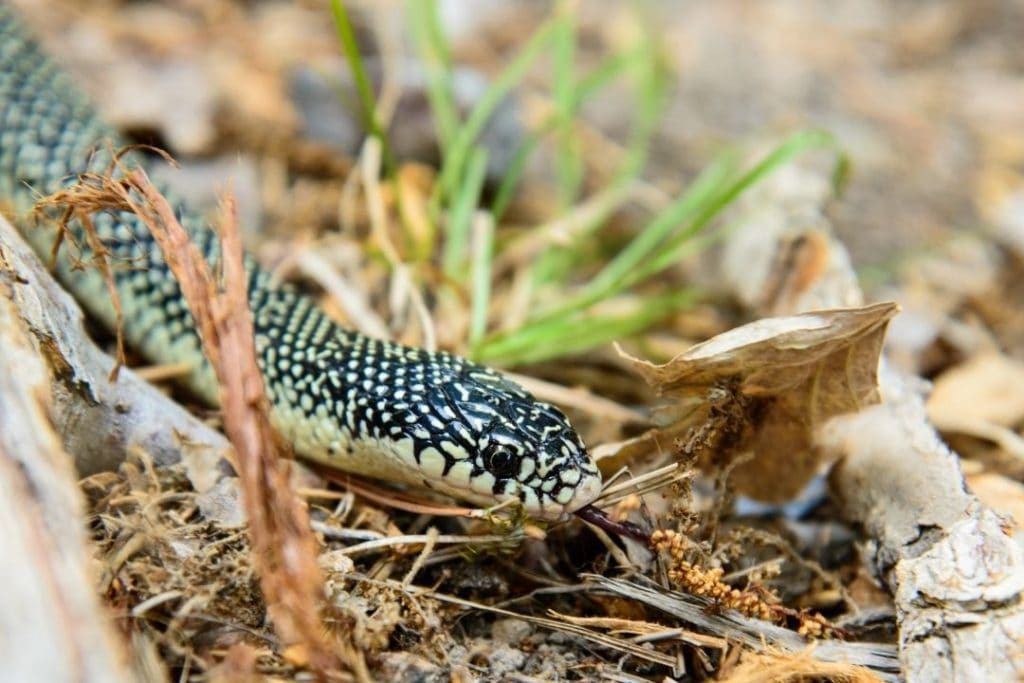
Captive snakes are much more likely to survive to adulthood. They have reliable access to food, steady temperatures, access to water, and protection from disease and predators.
Good husbandry, a proper enclosure, and veterinary care allows snakes to live long and healthy lives in captivity. Kingsnakes can live to be over 20 years old with good care. The key here is good care.
Poor conditions can kill snakes quickly or cause issues that shorten their lives.
Obesity is always an issue with snakes, though kingsnakes are less prone to it than some other commonly kept species. Obesity places extra pressure on the organs.
Powerfeeding can also harm snakes. Feeding more food can make a young snake grow fast, but the growth typically isn’t healthy. The snake may reach breeding size more quickly, but it will also live for less time.
The wrong temperatures can also kill snakes or cause long term damage. All snakes need a good temperature gradient si they can thermoregulate.
If you heat the entire enclosure, the snake can’t choose its temperature and will suffer. Even if the temperature won’t kill the snake, it can weaken its immune system and leave it open to infection and disease.
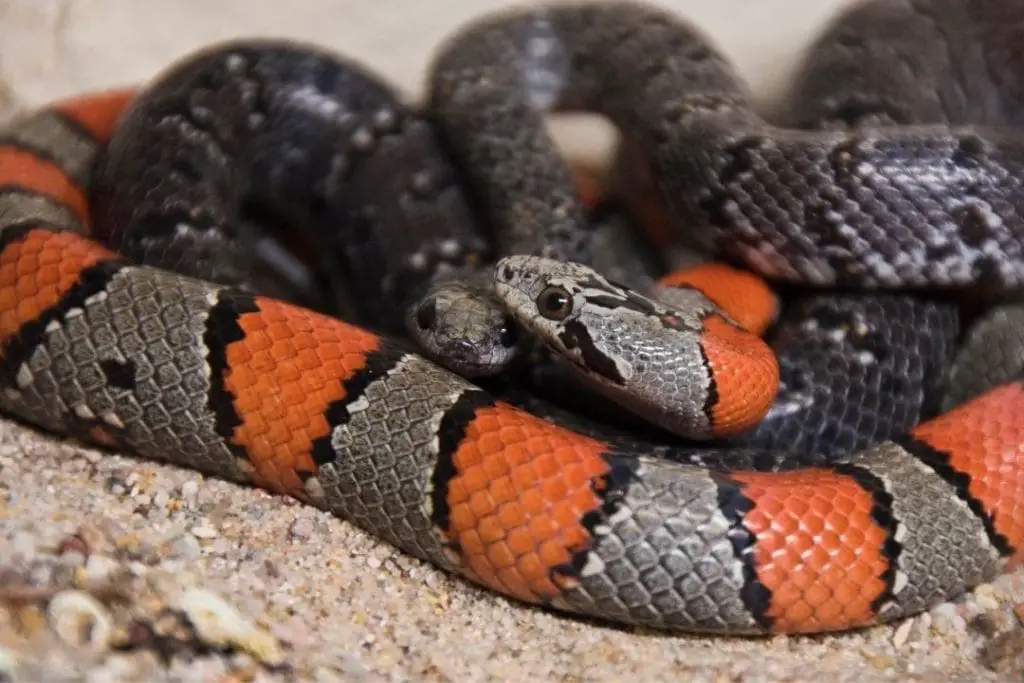
Since snakes are very good at hiding illness, you may not notice your snake is sick until it is too late. Many of the behaviors that indicate an illness or infection can also be displayed if the conditions are off.
Keeping up on temperatures is an important part of snake care. Be sure you take the time to double check that your thermometers are accurate.
Humidity and water are also important. Dehydration can sicken or kill snakes.
Humidity levels are also essential for your snake. If the humidity is too low, your snake will suffer from dehydration and will have incomplete sheds.
Incomplete shedding can cause injury or infection. If the humidity is too high, your snake can suffer from scale rot and respiratory infections.
Both of these can weaken or kill a snake. Respiratory infections in particular can lead to death very rapidly since your snake will struggle to breathe.
The enclosure itself is also important. All snakes need exercise just like people. The best way to offer this is to have an enclosure that is sized for the snake and fill it with species-appropriate furnishings to encourage the snake to move and explore.
A snake that doesn’t have the chance to get exercise will lose muscle tone, which can make feeding harder for your pet since these are constrictors.
They will also be prone to obesity since they do not use up all the calories they intake. Feeding is another important point. Live prey can injure your snake, so offering frozen and thawed prey is best.
Live prey also carries parasites that can harm your snake. You need to feed prey that is about the same width as the widest part of the snake’s body.
Too large and your snake will likely regurgitate or struggle to fully digest the prey before it rots. Too small and your snake will be hungry.
You also need to feed at the right rate to meet your snake’s needs. Finally, good veterinary care is essential. Find a reptile vet in your area since not all vets understand how to care for reptiles.
Ideally they should have experience with kingsnakes, but regular vet visits while your pet is healthy can establish a baseline that can help catch health problems early.
Your vet is very important for keeping your snake healthy in the long term. Do not neglect veterinary care for your pet or it will suffer for it. Keeping up on all aspects of care will help your pet lead a long and healthy life.
Conclusion
Kingsnakes can live for over 20 years with proper care. So long as you put in the work, you will have a companion for decades. If you have any questions or comments, please leave them below.
